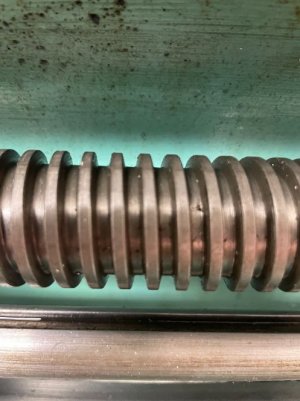When this shaft was handed to me I thought it was an Acme thread but on closer examination I'm not so sure. It lacks the distinctive flat valleys of Acme threads. It's off of the battleship USS Texas. I think it's off of a 1912 vintage 5" gun if dating the item helps any. The thread gauge is for standard Imperial V threads; 8 TPI. There does seem to be a progressively larger gap developing but is that because the threads don't match the gauge? The OD of the threads and shaft is .948". Does anyone recognize this thread?



